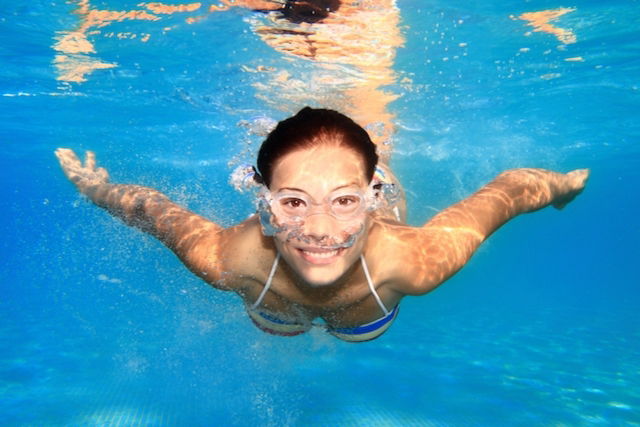Naegleria fowleri is a type of free-living amoeba that can enter the body through the nose and reach the brain. It destroys brain tissue and causes symptoms like loss of appetite, headache, vomiting, fever and hallucinations. This parasite, also known as the brain-eating amoeba, can be found in warm, untreated waters, such as rivers and community swimming pools.
Naegleria fowleri infections are rare, but its diagnosis and treatment are difficult. In most cases, a diagnosis is only confirmed only after the patient's death. Despite this, it is known that the parasite is sensitive to Amphotericin B, which is why it is the drug of choice if this infection is suspected.

Main symptoms
The main symptoms of a Naegleria fowleri are:
- Loss of appetite
- Headaches
- Vomiting
- Fever
- Hallucinations
- Blurry vision
- Altered level of consciousness
Symptoms tend to appear about 7 days after initial contact with the amoeba. They can be easily confused with the symptoms of bacterial meningitis. A more advanced phase of this infection may cause seizures or even coma.
To differentiate the two diseases, the doctor will evaluate the person's clinical history and health habits, and order meningitis tests to rule this condition out.
How it's transmitted
Infections with the Naegleria fowleri amoeba can occur when the parasite enters the body through the nose. It is therefore more common in people who practice water sports such as diving, skiing or surfing, especially if these sports are carried out in contaminated waters.
In these cases, water is forced into the nose and the parasite is able to reach the brain more easily. This parasite can withstand fluctuations in temperature, which is why it can survive in human tissues.
How it's diagnosed
Because it is considered to be a rare infection, diagnosing Naegleria fowleri is difficult. There are not many resources readily available to help identify this amoeba. Specific tests are found mainly in the United States, as most global cases are identified there due to the climate. Nonetheless, most cases of Naegleria fowleri infection are diagnosed after the patient's death.
Treatment options
Given it is a rare disease and diagnosis is often only confirmed post-mortem, there is no specific treatment approach recommended for this parasite, Medications such as Miltefosine and Amphotericin B are effective in combating this amoeba and can be prescribed by the doctor if an infection is suspected.
Prevention measures
In most cases, these parasites can be found in areas with warm water, such as:
- Lakes, lagoons, rivers or mud puddles with hot water
- Untreated pools or hot tubs
- Untreated water wells or municipal water containers
- Hot springs or geothermal water sources
- Aquarius
Although it is dangerous, this parasite can be easily eliminated from swimming pools or hot tubs with appropriate water treatments.
Naegleria fowleri infections are considered to be rarte. However, to avoid contracting this infection, you should avoid bathing in untreated water. Furthermore, this is an infection that is not contagious, and is therefore not transmitted from person to person.
